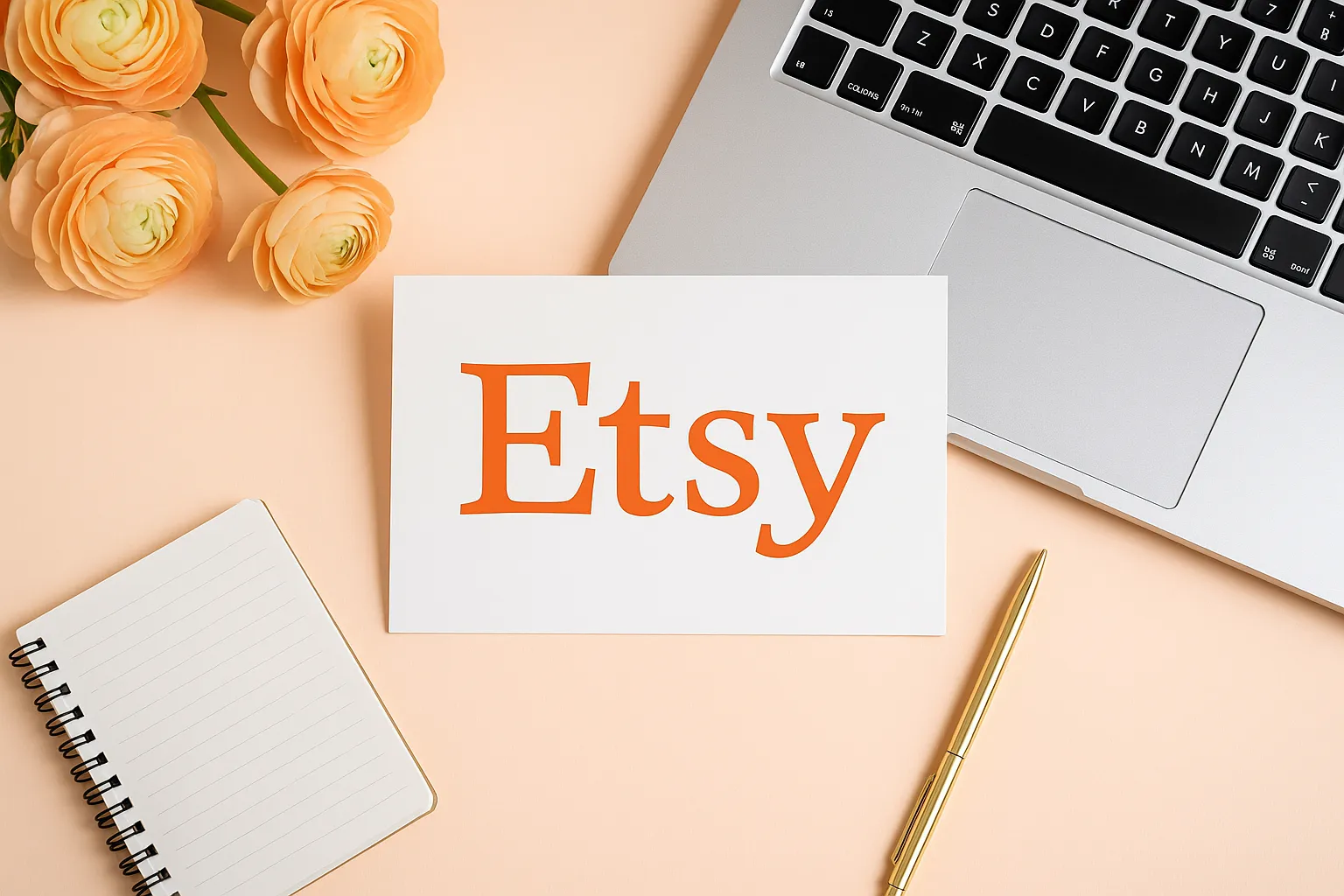Etsy has redefined the way people buy and sell handmade, vintage, and unique products. Launched in 2005, Etsy quickly evolved into a global marketplace connecting millions of artisans with customers seeking authentic, personalized items.
Its business model is worth studying because it proves that niche marketplaces can scale profitably without massive inventories. Instead of competing head-to-head with giants like Amazon, Etsy created a thriving ecosystem around independent creators. For startup founders aiming to build marketplace apps, Etsy’s playbook offers valuable lessons on monetization, community building, and platform-driven growth.
What is Etsy & How It Works
Etsy is an online marketplace designed to help independent sellers offer handmade, vintage, and craft supply products to a global audience.
It brings together millions of unique products under one roof, making it easy for buyers to discover special items they can’t find in big-box stores.
Sellers can build their own branded storefronts, set pricing, and manage inventory without needing technical expertise.
The platform also provides tools for marketing, shipping, and customer service, so creators can focus on what they do best—making products people love.
Etsy’s community-driven approach has turned it into a go-to destination for authentic, one-of-a-kind shopping experiences.
The Problem Etsy Solves
Before Etsy, artisans struggled to reach customers beyond their local markets. Traditional e-commerce platforms were either too broad or not tailored to small creators. Etsy solved this by creating a specialized space where makers could showcase their work to buyers actively searching for unique, authentic items.
Who Uses Etsy?
- Sellers: Artists, crafters, vintage collectors, and small business owners.
- Buyers: Individuals looking for personalized gifts, home decor, wedding items, jewelry, and other distinctive products.
How the work App Operates
Etsy functions as a peer-to-peer marketplace:
- Sellers create shops and list their products.
- Buyers browse categories or search for specific items.
- The platform handles payments, reviews, and messaging.
- Etsy charges fees for listings, transactions, and advertising services.
Once an order is placed, the seller manages packaging and shipping directly to the buyer.Etsy also offers tools for tracking orders, managing returns, and collecting customer feedback.This decentralized model keeps overhead low and allows the platform to scale globally without maintaining warehouses or inventories.
This model allows Etsy to scale without holding inventory or manufacturing products itself.
Read More : What is Etsy App and How Does It Work?
Target Audience
Etsy attracts a diverse set of users who value originality and craftsmanship. Here’s a closer look at the core customer segments:
- Creative Entrepreneurs: Independent artisans, designers, and vintage sellers who want to reach a global customer base without managing a standalone website.
- Conscious Shoppers: Consumers seeking ethically made, sustainable, or eco-friendly products that aren’t mass-produced.
- Gift Buyers: People looking for personalized gifts for weddings, birthdays, holidays, and special occasions.
- Collectors: Enthusiasts searching for rare or vintage items to add to their collections.
- DIY Hobbyists: Crafters who buy supplies and patterns to create their own projects.
Understanding these audiences helps Etsy tailor its marketing, search algorithms, and seller services to drive engagement and repeat purchases.
Read More : Best Etsy Clone Scripts in 2025: Features & Pricing Compared
Features that Support the Business Model
Etsy’s growth is fueled by a set of features that not only create value for users but also generate consistent revenue. Here are the core features that power its business model:
- Seller Shops
Every seller can set up a branded shop with custom banners, profiles, and policies. This fosters trust and encourages repeat purchases. - Listing Management
Simple tools let sellers upload photos, write descriptions, and manage inventory. Etsy charges a small fee per listing, driving predictable income. - Integrated Payments
Etsy Payments handles transactions in multiple currencies, taking a commission on each sale. - Promoted Listings & Ads
Sellers can pay to boost product visibility in search results, generating advertising revenue for Etsy. - Personalized Search & Recommendations
Machine learning algorithms suggest products based on browsing history, improving conversion rates. - Mobile App
Buyers and sellers use Etsy’s app to shop and manage stores on the go, increasing engagement. - Etsy Plus Subscription
An optional premium plan offering advanced shop customization, discounts on services, and marketing tools.
These features create an ecosystem that keeps sellers invested in the platform and gives buyers a seamless shopping experience.
Revenue Streams of Etsy
Etsy monetizes its marketplace through a blend of transaction fees, advertising, subscriptions, and value-added services. Here’s a clear breakdown:
| Revenue Stream | How It Works |
| Listing Fees | $0.20 charged per product listed, renewable every 4 months. |
| Transaction Fees | 6.5% commission on the item price (excluding shipping/tax). |
| Payment Processing Fees | Additional % fee per transaction (varies by country). |
| Advertising & Promoted Listings | Sellers pay to appear higher in search results and ads across the web. |
| Etsy Plus Subscription | Monthly fee for enhanced shop tools and credits. |
| Offsite Ads Fees | Etsy promotes listings externally and charges a fee when sales result. |
Quick Explanations:
- Listing Fees: Encourage serious sellers while generating predictable baseline revenue.
- Transaction & Payment Fees: Core commission model aligned with sales volume.
- Advertising: Major income stream as sellers compete for visibility.
- Etsy Plus: Subscription upselling for power sellers.
- Offsite Ads: Performance-based advertising that benefits both Etsy and sellers.
Cost Structure
Running a global marketplace like Etsy involves a range of operational expenses. Here are the main costs associated with this business model:
- Platform Development & Maintenance
Continuous investment in website, mobile apps, search algorithms, and infrastructure to ensure a smooth user experience. - Payment Processing
Fees paid to payment providers and banks to handle transactions securely. - Customer Support
Teams dedicated to resolving disputes, assisting sellers, and answering buyer inquiries. - Marketing & Advertising
Spending on digital marketing campaigns, influencer partnerships, and brand awareness to attract new buyers and sellers. - Trust & Safety
Systems and staff to monitor listings for prohibited items, protect against fraud, and enforce policies. - Hosting & Infrastructure
Cloud services and server costs to scale globally while maintaining high uptime.
Understanding these costs is essential for founders planning to build marketplace apps—especially since margins depend on balancing growth investments with operational efficiency.
2024–2025 Innovations or Updates
Etsy has rolled out several updates in the last year to strengthen its business model and help sellers succeed. Here are some notable changes:
- Increased Transaction Fees
In 2024, Etsy raised its transaction fee from 5% to 6.5% to fund product development and marketing initiatives. This change has significantly boosted revenue per sale. - Enhanced Personalization
Improved recommendation algorithms now surface more relevant products, increasing conversion rates and average order value. - Video Listings
Sellers can now upload short videos to showcase their products, making listings more engaging and reducing buyer hesitation. - Etsy Purchase Protection
A new program offering refunds for non-delivery or items not as described, strengthening buyer trust. - Sustainability Initiatives
Etsy introduced badges and filters for eco-friendly products, aligning with consumer trends toward responsible shopping. - Offsite Ads Optimization
Etsy refined its offsite advertising model to improve ROI for sellers and increase commissions on successful referrals.
These innovations are designed to keep Etsy competitive, enhance seller earnings, and deepen buyer loyalty.
Takeaways for Startup Founders
Etsy’s success offers a roadmap for entrepreneurs building marketplace apps. Here are key lessons you can apply:
- Focus on a Niche Audience
Etsy didn’t try to be another general e-commerce site. Serving artisans and vintage sellers gave it a clear identity and passionate community. - Monetize Multiple Ways
Combining listing fees, commissions, subscriptions, and advertising ensures revenue diversity and stability. - Invest in Trust & Safety
Buyers feel comfortable transacting because Etsy enforces strict policies and offers purchase protection. - Prioritize Mobile Experience
A feature-rich, intuitive app drives engagement and repeat purchases. - Leverage Personalization
Smart search and recommendations make it easier for buyers to discover the right products.
If you’re planning to build a marketplace like Etsy, partnering with Miracuves can save you years of development time. Our ready-made Etsy solutions come with all the essential features—customizable storefronts, secure payments, seller dashboards, and scalable infrastructure—so you can focus on growing your community and brand.
Conclusion :
Etsy’s business model proves that niche marketplaces can thrive by empowering independent sellers and delivering a unique shopping experience.
By combining multiple revenue streams, a trusted ecosystem, and continuous innovation, Etsy has built a platform that generates billions in sales and supports millions of creative entrepreneurs.
If you’re ready to launch your own marketplace app inspired by Etsy’s model, Miracuves can help you move fast and build confidently. Our Etsy solutions come preloaded with essential features, customizable design, and robust backend systems—so you can focus on building your brand, not your infrastructure.
Ready to get started?
Contact Miracuves today to explore how we can bring your marketplace vision to life.
FAQs :
1. How does Etsy make money?
Etsy earns revenue through multiple channels: listing fees, transaction commissions, payment processing fees, advertising (Promoted Listings and Offsite Ads), and Etsy Plus subscriptions. This mix of fees ensures stable and diversified income.
2. What makes Etsy different from other marketplaces?
Etsy focuses specifically on handmade, vintage, and unique products. Unlike large general marketplaces, Etsy cultivates a community of creative entrepreneurs and buyers who value authenticity and craftsmanship.
3. Can new marketplace startups compete with Etsy?
Yes, but success requires a clear niche, strong value proposition, and a trusted platform experience. Building community and offering tools that make selling easy are critical. Leveraging a ready-made solution from Miracuves can help you launch quickly and compete effectively.
4. How does Etsy protect buyers and sellers?
Etsy has robust policies, purchase protection programs, and moderation systems to ensure transactions are secure and disputes are resolved fairly. This trust infrastructure is a major reason customers return.
5. What is the biggest expense for running a marketplace like Etsy?
The main costs include platform development, payment processing fees, customer support, marketing, and infrastructure to handle large volumes of traffic and transactions.
Related Articles :







